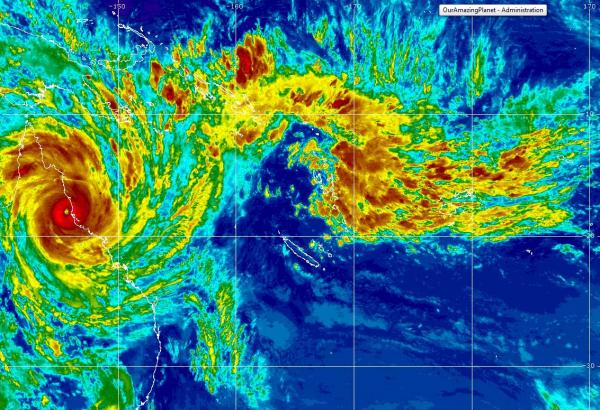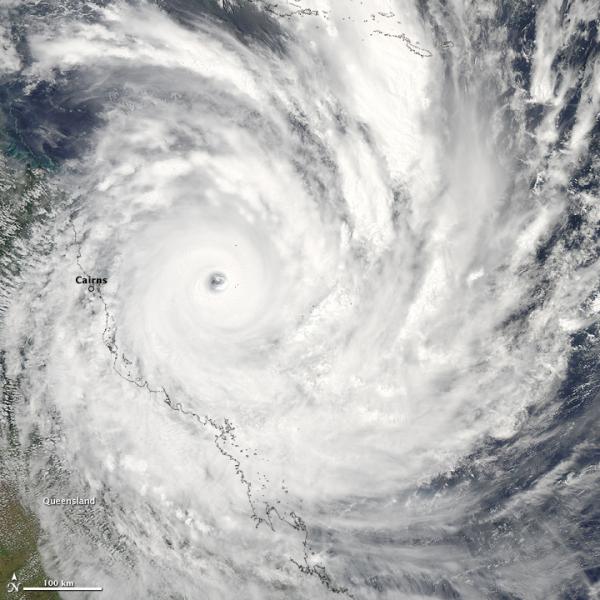Cylcone Yasi Pounds Flood-Ravaged Australia


Tropical Cyclone Yasi struck the flood-ravaged Australian coast today, according to Australia's Bureau of Meteorology.
Yasi made landfall as a Category 5 storm, similar to the intensity of Hurricane Andrew, which destroyed parts of South Florida in 1992. Yasi hit the coast just after midnight on Feb. 3, local time (about 9:30 a.m. EST, Feb. 2).
Yasi is bringing more rain to already soaked Queensland. The state has been battling ongoing flooding that has killed more than 20 people since December. [Related: When Will the Australia Flooding Stop? ]
The storm is expected to bring sustained winds of 155 mph (250 kph) with gusts possibly topping 185 mph (300 kph) in northeastern Queensland, according to the Joint Typhoon Warning Center in Pearl Harbor, Hawaii. The storm could trigger waves up to 42 feet (13 meters) tall.
More than 75,000 people fled the immediate danger area, and 89,000 homes in Queensland are without power, The Australian reported.
"I can't sugarcoat this for people: It's going to be a tough 24 hours, for some it's going to be a tough couple of days," Queensland Premier Anna Bligh told reporters in Brisbane yesterday, CNN reported.
The storm will slowly weaken as it continues to move in a west-southwesterly direction, said the Bureau of Meteorology. The most intense part of the hurricane could take hours to pass and rains may continue throughout the week.
Get the world’s most fascinating discoveries delivered straight to your inbox.
Yasi follows on the heels of Tropical Cyclone Anthony , which hit parts of Queensland on Jan. 30. The storm brought winds of about 90 mph (150 kph), but no major damage was reported.
Cyclones, typhoons and hurricanes are all different names for the same weather phenomenon.
- A History of Destruction: 8 Great Hurricanes
- More Than 200,000 Affected by Flood Waters in Queensland
- The World's Weirdest Weather
Reach OurAmazingPlanet staff writer Brett Israel at bisrael@techmedianetwork.com. Follow him on Twitter @btisrael.



